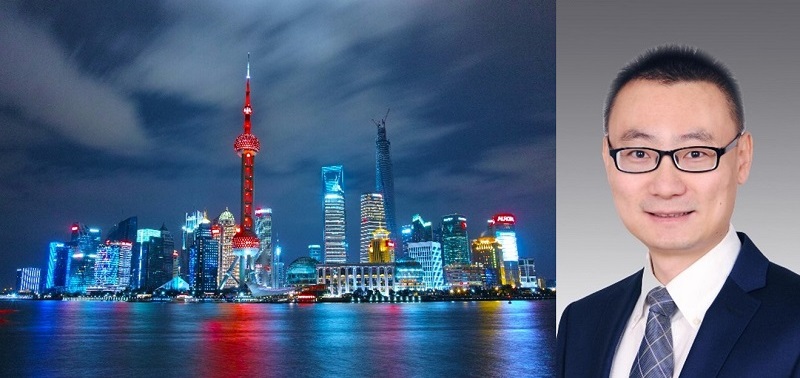The highlights of the revised Patent Law Implementing Rules of China
The new Rules for the Implementation of Patent Law (hereinafter referred to as “the Rules”) came into force on January 20, 2024. There are many amendments in the new Rules, and I have summarized the need-to-know points for your reference.
1. Regarding the principle of good faith
The Rules establishes the breach of the principle of good faith as a reason for rejection both in the preliminary and substantive examination procedures of patent applications, as well as a reason for invalidation in the invalidation procedure by stipulating that “patent applications should be based on real inventions and creation activities, and must not be falsified.” In addition, the Rules add a provision that warns applicants or patentees who violate the principle of good faith and a fine of up to 100,000 yuan may be imposed.
2. Regarding the submission date and delivery date of electronic applications
The Rules stipulate that the provision for presumed delivery date for mail delivery, which is 15 days from the notifications sending date, does not apply to electronic applications anymore. Therefore, the deadline for responding to the notifications has been shortened.
3. Regarding the priority system for inventions and utility models
a) Restoration of the priority right
The applicants for an invention or a utility model can request the restoration of priority within 2 months from the expiration date. The corresponding provision has also been made for the restoration of priority for PCT applications.
b) Addition and correction of priority claims
The Rules add that the applicant of a patent for an invention or a utility model may, within 16 months from the priority date or within 4 months from the filing date, request to add or correct the priority claims. It is worth noting that the addition and correction of priority claims cannot be applied simultaneously with the restoration of the priority as mentioned above.
4. Regarding the incorporation by reference
The incorporation by reference is introduced for patent applications for inventions and utility models. That is, if the applicant requests priority on the filing date, he/she can add the content of the priority document to the pending patent application within 2 months from the filing date or within the time limit specified by the CNIPA with the application date maintained. It is worth noting that incorporation by reference cannot be applied simultaneously with the above-mentioned restoration of priority right and the addition and correction of priority claims.
5. Regarding the examination of obvious creativity in utility models and designs
The Rules add the examination of whether or not a utility model obviously lacks creativity, and whether or not the design has no significant difference from the existing designs or the combination of existing design features during the preliminary examination.
6. Regarding deferred examination
The Rules clarify that deferred examination can be requested for all types of patent applications. Specifically, the Examination Guidelines stipulate that the request for deferred examination of inventions is applied on an annual basis, and a maximum of 3 years of deferment can be requested. One-year deferment can be applied to utility models. The request for deferred examination of designs has been revised from the previous annual basis to monthly basis, and a maximum of 36 months of deferment can be requested. In addition, the request for deferment can be withdrawn before the expiration of the deferment period.
7. Regarding the Patent Right Evaluation Report
The Rules expand the scope of entities that can request the Patent Right Evaluation Report. In addition to the patentee and interested parties, the “accused infringer” can also request the Patent Right Evaluation Report. In addition, the applicant can request the Patent Right Evaluation Report when going through the patent registration procedures. In this case, the CNIPA shall issue a Patent Evaluation Report within two months from the date of announcement of the patent grant.
8. Regarding the examination scope and decision of the reexamination procedure
The examination scope and decision of the reexamination procedure have been revised. The scope of reexamination also includes “other obvious violations of the Patent Law and the Rules in the patent application”, and the reexamination decision of “upholding the original rejection decision” has been revised to the decision of “rejecting of the reexamination request”.
9. Regarding patent term compensation
a) Patent Term Adjustment due to examination delay (PTA)
The Rules stipulates that PTA must be requested within 3 months from grant and is calculated as follows:
a. after 4 years from application date; and
b. after 3 years from the date of filing the request for examination; and
c. minus the unreasonable delay from the applicant
The Rules specifically stipulate what is “reasonable delay” and “unreasonable delay caused by the applicant”, and stipulate that the PTA does not apply to the invention patent filed in the same day with the utility model for the same invention-creation.
b) Patent Term Extension for pharmaceutical patents (PTE)
The Rules stipulate the following aspects regarding PTE, including the meaning of invention patents related to new drugs, the deadline and requirements for requesting the PTE, the calculation method, and the scope of patent protection during the term extension period.
10. Regarding the grace period without losing novelty
The Rules expand the scope of the “academic or technical conference” for the grace period without losing novelty to include “academic or technical conferences held by international organizations recognized by the relevant competent departments of the State Council”, and relax the requirements for documentary evidence of international exhibitions or academic or technical conferences.
11. Regarding partial design
The Rules stipulate for the requirements for the application documents of partial design.
12. Regarding domestic priority of design
The Rules provide detailed provisions for domestic priority of design. The prior applications for domestic priority of design can be either design or invention or utility model applications.
13. Regarding the Hague Agreement on Design
The Rules add a new Chapter 12, “Special Provisions on International Applications for Design”, to stipulate for the examination rules for design applications through the Hague Agreement.
14. Regarding the Open License System
The Rules clarify the timing of submitting an open license declaration, specific recorded matters, and the circumstances where open licensing cannot be implemented, and require the patentee or licensee to make a record with the CNIPA with written documents capable of proving that the license is reached.
15. Regarding the Legal Standard of inventor remuneration
The Rules increase the inventor remuneration for a granted invention patent from no less than 3,000 yuan to no less than 4,000 yuan, and for a granted utility model or a granted design patent from no less than 1,000 yuan to no less than 1,500 yuan, and stipulates that reasonable remuneration shall be given to the inventors in accordance with the provisions of the Law of Promoting the Transformation of Scientific and Technological Achievements, that is, the proportion of patent implementation remuneration has also been increased.
16. Regarding the handling of acts of counterfeiting patents
In the Rules, the provision of “ordering to cease selling” is retained, and the “exemption from the penalty of a fine” is deleted for the case that the product is sold without being aware of the counterfeit patents and its legitimate source can be proven.
17. Regarding the Stay of proceedings
The Rules stipulate the stay of proceedings where a party requests to the CNIPA after requesting the department in charge of patent to mediate or bringing a lawsuit to the people’s court due to a dispute over the ownership of the patent application right or patent right. The Rules add the provision that “if the CNIPA considers that the reason for the stay requested by the party concerned is obviously unfounded, relevant proceedings may not be stayed”.
These are the noteworthy points in the Rules for the Implementation of the Patent Law that I have summarized. If you have any questions, please feel free to contact me.
About the blogpost author:
 Peter is a partner with Linda Liu & Partners, a top 10 IP firm in China. He has two decades practicing experience in IP systems, serving global clients from US, EP, Japan and other countries. He provides foreign companies with IP strategy planning, patent mining, patent portfolio building, patent procurement, patent reexamination, patent invalidation and administrative litigation, patent validity assessment, infringement assessment, etc.
Peter is a partner with Linda Liu & Partners, a top 10 IP firm in China. He has two decades practicing experience in IP systems, serving global clients from US, EP, Japan and other countries. He provides foreign companies with IP strategy planning, patent mining, patent portfolio building, patent procurement, patent reexamination, patent invalidation and administrative litigation, patent validity assessment, infringement assessment, etc.
Peter made the final rankings in IAM Patent 1000 in 2017 -2020, “As a US attorney who often needs detailed guidance from Chinese associates, I know I can count on Peter Zhang and his colleagues to deliver thorough analysis on matters, as well as concrete suggestions for moving forward.” reports one respondent.
For more information about Peter’s firm, Linda Liu &Partners, please visit http://www.lindapatent.com/en/.



